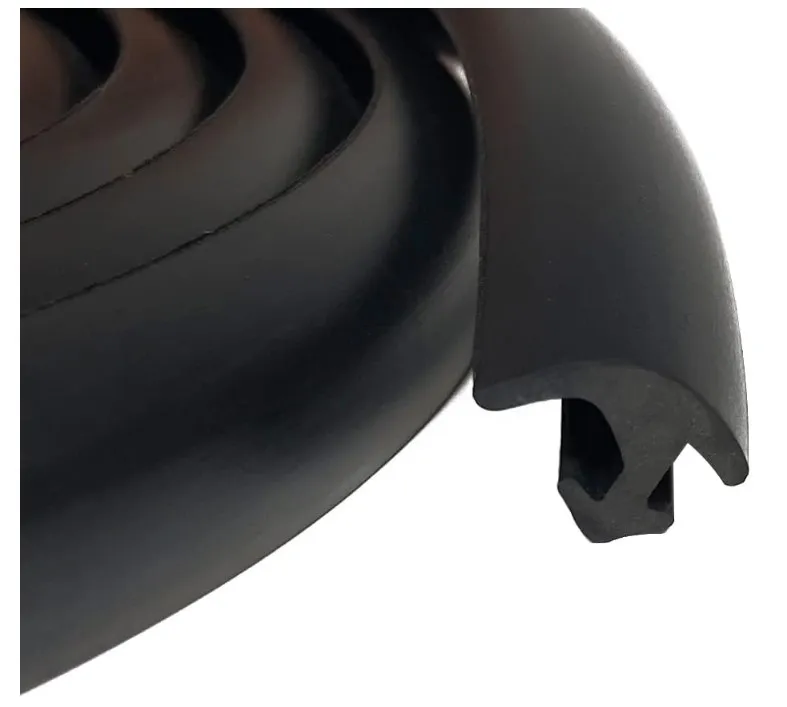high pressure rubber seals
High Pressure Rubber Seals An Overview
High pressure rubber seals are essential components in various industrial applications where the containment of fluids and gases under elevated pressures is crucial. These seals are designed to prevent leaks, maintain integrity, and ensure the safe operation of machinery and equipment. With advancements in material science and engineering, high pressure rubber seals have become increasingly effective, durable, and versatile.
Material Composition
Typically, high pressure rubber seals are made from elastomers, which are materials that exhibit both elasticity and resilience. Common materials used include nitrile rubber (NBR), fluorocarbon rubber (FKM), silicone, and ethylene propylene diene monomer (EPDM). Each of these materials has unique properties that make them suitable for specific applications. For instance, NBR is known for its excellent resistance to oils and fuels, making it a preferred choice in the automotive and aerospace industries. In contrast, FKM offers superior chemical resistance and high-temperature stability, making it ideal for applications in the chemical processing and aerospace sectors.
Design and Applications
The design of high pressure rubber seals can vary widely depending on the application requirements. Seals can come in various shapes such as O-rings, gaskets, and custom molded designs. O-rings are commonly used in hydraulic and pneumatic systems to create tight seals that can withstand high pressure and prevent leaks. Gaskets, on the other hand, are often used in flanged joints and provide a compressive sealing mechanism between two surfaces.
high pressure rubber seals

High pressure rubber seals are employed in a myriad of industries, including oil and gas, automotive, aerospace, and manufacturing. In the oil and gas industry, for example, these seals are crucial for maintaining the integrity of pipelines and drilling equipment under high pressure and aggressive environments. In automotive applications, they are used in engines, transmissions, and fuel systems to prevent leaks and ensure efficient performance.
Performance Considerations
When selecting high pressure rubber seals, several performance factors must be considered. These include temperature resistance, pressure tolerance, chemical compatibility, and wear resistance. High pressure applications often involve extreme conditions, so selecting the correct material and design is vital. Manufacturers typically conduct rigorous testing to ensure that the seals can withstand the operational demands placed on them, including fatigue, compression set, and thermal aging.
Future Trends
As industries continue to evolve, the demand for high pressure rubber seals is expected to grow. Innovations in material technology, such as the development of hybrid materials and advanced manufacturing techniques, will enhance the performance and longevity of these seals. Additionally, the increasing focus on environmental sustainability may lead to the development of eco-friendly seal materials that do not compromise on performance.
In conclusion, high pressure rubber seals play a pivotal role in ensuring the efficient and safe operation of various systems across multiple industries. Selecting the right seal based on specific application requirements is critical for performance and reliability. With ongoing advancements in materials and technology, the future of high pressure rubber seals looks promising, paving the way for enhanced efficiency and sustainability in industrial applications.
Share
-
The Best Lubricants for Aluminum Roller GuidesNewsJul.23,2025
-
Slitting Machine Applications in the Packaging IndustryNewsJul.23,2025
-
Rolling Roller Balancing Techniques for Smooth OperationNewsJul.23,2025
-
How To Optimize An EV Battery Assembly LineNewsJul.23,2025
-
Energy Efficiency in Modern Battery Formation EquipmentNewsJul.23,2025
-
Automation Trends in Pouch Cell Assembly EquipmentNewsJul.23,2025







